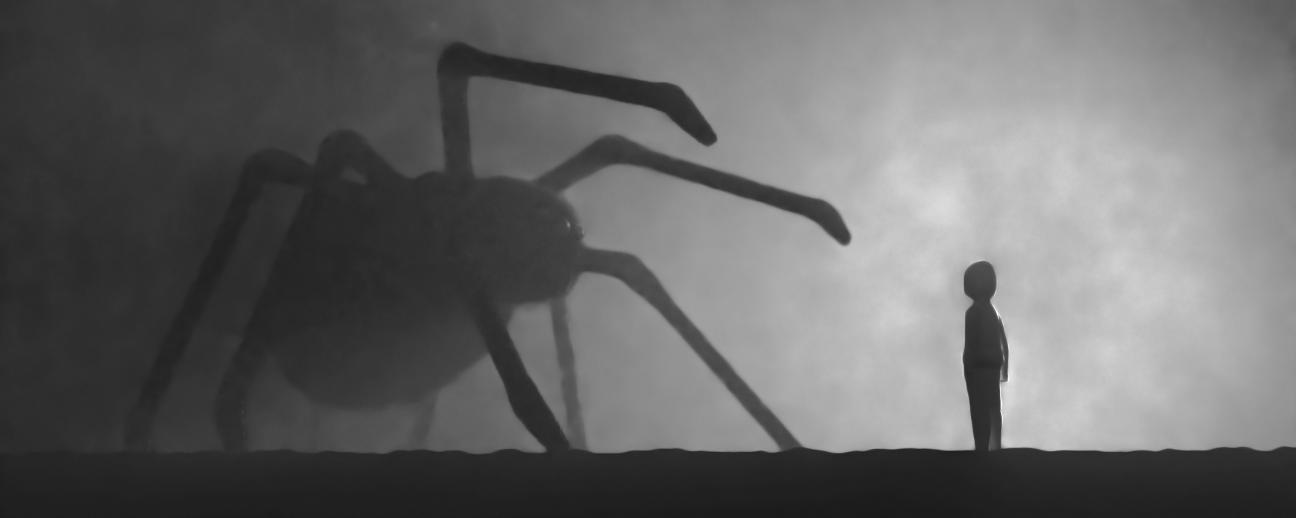A phobia (also called a specific phobia) is an intense fear of an object or situation. This fear causes the person to avoid the object/ situation which is feared, and if they are exposed to it they experience extreme distress. The person often knows that this fear is irrational and that the feared object/ situation poses no real danger, but the anxiety they experience can feel overwhelming and out of their control.
There are four main types of specific phobias:
1) Social phobia - fear of social situations or activities.
2) Fear of specific situations (e.g. heights, lifts), animals, or insects.
3) Fear of injury, blood, or injections.
4) Agoraphobia - fear of being in a place where you may have a panic attack. This is often a fear of being away from home/ safety.
Phobias are caused by a mix of environmental and genetic factors. A phobia may develop after a traumatic or stressful experience or through observing others.
The anxiety and avoidance behaviour that living with a phobia causes can have a negative impact on school/ work, relationships, and cause disruption to daily life and routines.
- Intense, persistent, and unreasonable fear of an object or situation.
- Immediate fear and anxiety response when exposed to the feared object/ situation. Anxiety may also be experienced when thinking about the object/ situation.
- Fear is out of proportion to the actual danger.
- Awareness that fear is unreasonable but feel powerless and unable to control the fear.
- Increased anxiety as you get closer to the feared object/ situation.
- Avoidance of the feared object/ situation, or enduring it but with extreme distress.
- Physical reactions to feared object/ situation. Such as increased heart rate, difficulty breathing, sweating, tight chest, feeling dizzy or light headed, nausea, shaking.
- Fear significantly impacts your daily functioning.
If a phobia is causing significant distress and negatively impacting your daily life (such as your work, school, or relationships) then it is important to seek help. The earlier you seek treatment for a phobia, the better the outcomes.
Psychological Therapy:
Psychological therapy is the most common approach for treating specific phobias. The two main approaches are exposure therapy and cognitive behavioural therapy (CBT).
Exposure therapy is the most common and successful treatment for phobias. This involves creating a hierarchy of feared objects/ situations and exposing yourself to these with the help of a therapist. During each exposure thoughts and feelings are addressed and relaxation techniques are used to lower anxiety.
CBT is a form of talk therapy which aims to change the unhelpful thoughts, beliefs, and behaviours related to the feared object/ situation in order to reduce anxiety and fear.
For some, understanding the cause of the phobia is important first step in treatment. Whereas, for others the cause is not important and instead the focus is on addressing the current thoughts and behaviours.
Medication:
Psychological therapy is the best approach in the treatment of phobias but in some cases antidepressants, beta blockers, or sedative medications may be prescribed to reduce symptoms of anxiety.
Other Ways to Manage Phobias and Anxiety:
Mindfulness, deep breathing, progressive muscle relaxation, and other relaxation techniques can help reduce anxiety. Other lifestyle changes that can be made to reduce anxiety include engaging in regular exercise, getting good sleep, eating a healthy diet, and avoiding caffeine.
The Australian Centre for Clinical Intervention (CCI) has an amazing collection of information sheets, worksheets, and self help resources to help you learn more about anxiety disorders and ways to reduce anxiety. There are specific resources on what needle phobia is and how to overcome it.
Anxiety NZ Trust is a non-profit, registered charity who support kiwis suffering from anxiety and anxiety related disorders, such as phobias. Their aim is to raise awareness and provide support for those living with these conditions. They run workshops and support groups, and provide education and treatment.
In this TEDx Talk, neuroscientist Dominique de Quervain describes the role of memory in phobias and how this knowledge can be used to overcome phobias. He explains the role which “fear memories” play in the development of phobias, and how we can develop a phobia even if we don’t recall a bad experience. Through exposure therapy we can build new “safety memories” which become stronger than the fear. In his lab he has been developing virtual reality apps to treat phobias.
This video by Osmosis outlines what defines a phobia, some common types of phobia, the causes, how phobias are treated, and the differences between everyday fear and a phobia. It also provides a great overview of agoraphobia and social phobia.
This resource created by Mind UK provides a detailed overview of phobias. It includes information on the causes, symptoms, common types of phobias, treatments, and advice on how to support someone with a phobia. This resource also contains stories from those with personal experience living with a phobia and links to information on related topics such as panic attacks.
